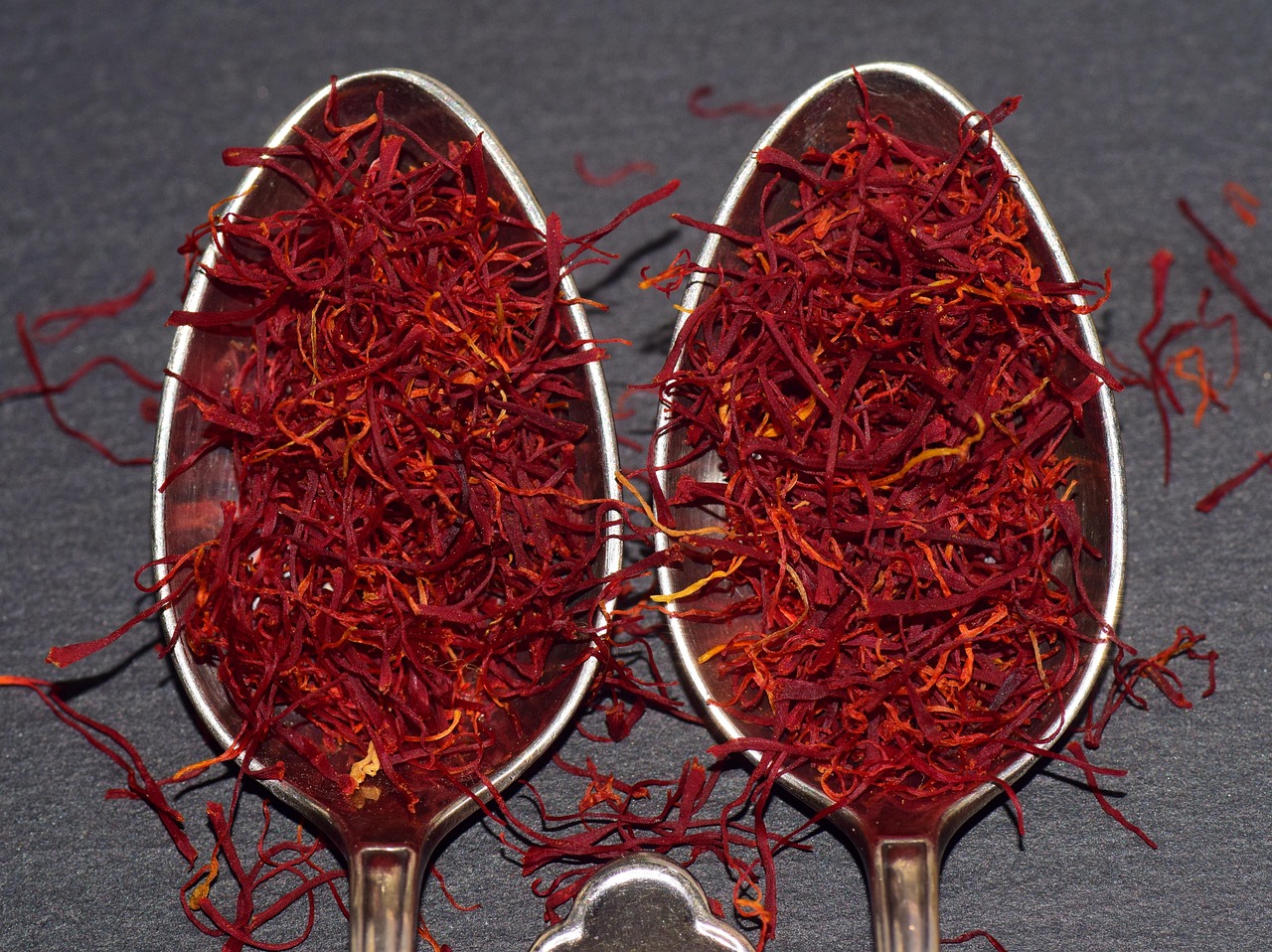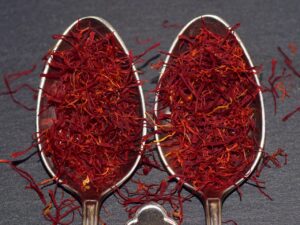Saffron, known as the “golden spice,” is more than just a luxurious culinary ingredient. Derived from the dried stigmas of the Crocus sativus L. flower, this precious botanical has been revered for centuries not only for its vivid color and unique aroma, but also for its remarkable therapeutic properties.
A Potent Plant Packed with Chemistry
What gives saffron its distinctive qualities? Chemical analysis has identified more than 150 bioactive compounds in saffron stigmas, but three stand out as key contributors:
- Crocins – responsible for saffron’s brilliant golden-red hue, these compounds are powerful antioxidants.
- Picrocrocin – the compound behind saffron’s bitter taste and a precursor to…
- Safranal – a monoterpenoid that gives saffron its signature fragrance and has been studied for its antidepressant and anti-inflammatory effects.
Together, these natural constituents make saffron one of the most pharmacologically intriguing plants in the world.
Traditional Uses Across Cultures
Across centuries and continents, saffron has played a vital role in traditional medicine systems—from Persian and Greek medicine to Ayurvedic and Unani healing. Historical texts and folk practices show saffron being used for:
- Pain relief – earaches, toothaches, teething pain in infants, and even gout.
- Digestive support – relieving bloating, promoting appetite, treating liver disorders, and helping with hemorrhoids.
- Reproductive health – regulating menstruation, acting as an aphrodisiac, and easing postnatal recovery.
- Respiratory support – addressing bronchitis, asthma, pertussis, and congestion.
- Mental wellness – treating nervous disorders, anxiety, and insomnia.
- Skin healing – easing eczema, acne, psoriasis, and aiding wound healing.
- Vision – treating conditions like cataracts, day blindness, and eye infections.
These uses weren’t limited to folk wisdom—many of them were echoed in historical medical texts by prominent figures such as Hippocrates, Dioscorides, and Avicenna.
Modern Research: Promising but Evolving
Scientific studies in recent decades have begun to validate some of saffron’s traditional applications. Preclinical research shows saffron and its components may offer:
- Antioxidant and anti-inflammatory effects
- Mood-boosting and antidepressant activity
- Neuroprotective benefits for Alzheimer’s, Parkinson’s, and epilepsy
- Potential anticancer properties
- Heart, liver, and kidney protection
- Support for vision health and metabolic wellness
Small clinical studies have also shown potential benefits in improving mood, cognitive function, libido, and even early Alzheimer’s symptoms. However, as with many natural remedies, more large-scale human clinical trials are needed to fully understand saffron’s therapeutic potential.
A Golden Future for Wellness
Whether used in teas, tinctures, or beauty rituals, saffron’s centuries-old reputation as a healing ally is being rediscovered through the lens of modern science. At Zarafron, we honor this legacy by offering saffron-infused wellness products rooted in purity, tradition, and innovation—bringing ancient wisdom into modern rituals.
Disclaimer
This information is intended for educational purposes only and is not a substitute for professional medical advice, diagnosis, or treatment. These statements have not been evaluated by the Food and Drug Administration. Zarafron products are not intended to diagnose, treat, cure, or prevent any disease. The historical uses of saffron referenced in this article are presented for educational purposes only. Please consult your healthcare provider before using saffron or any supplement, especially if you are pregnant, nursing, taking medications, or have a medical condition.
Source
- Torbati, M., et al. (2023). Pharmacological and Traditional Uses of Saffron: A Review. Retrieved from https://www.ahpa.org/herbs_in_history_saffron




